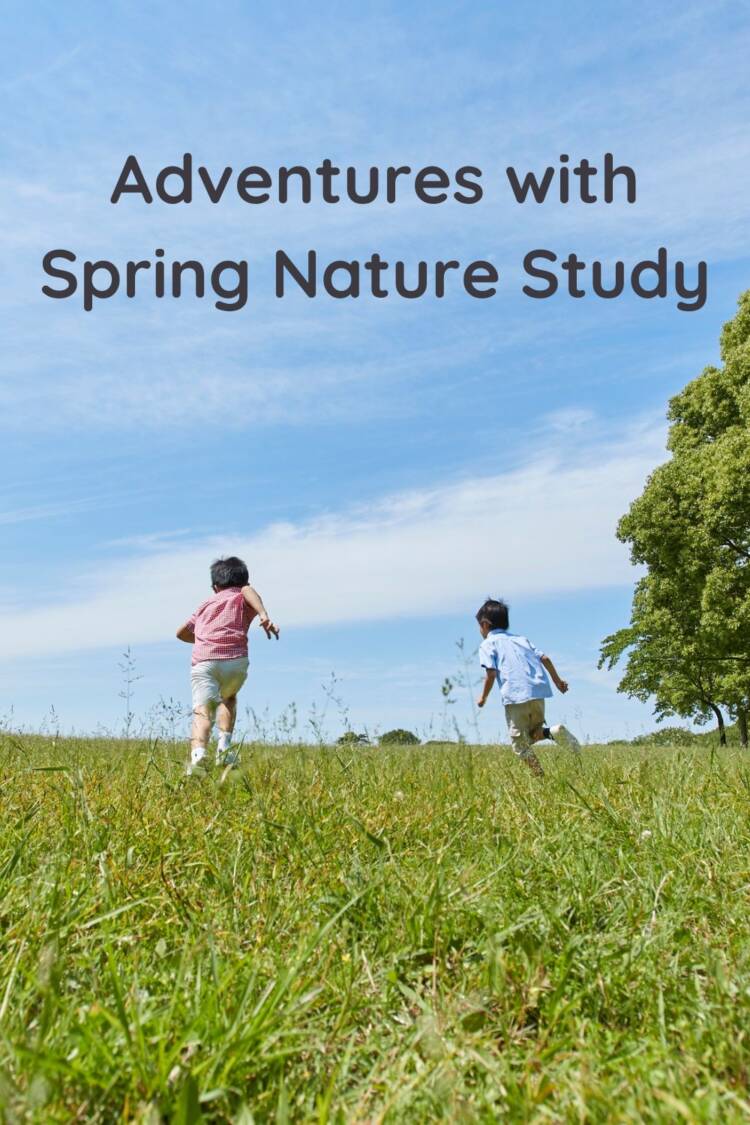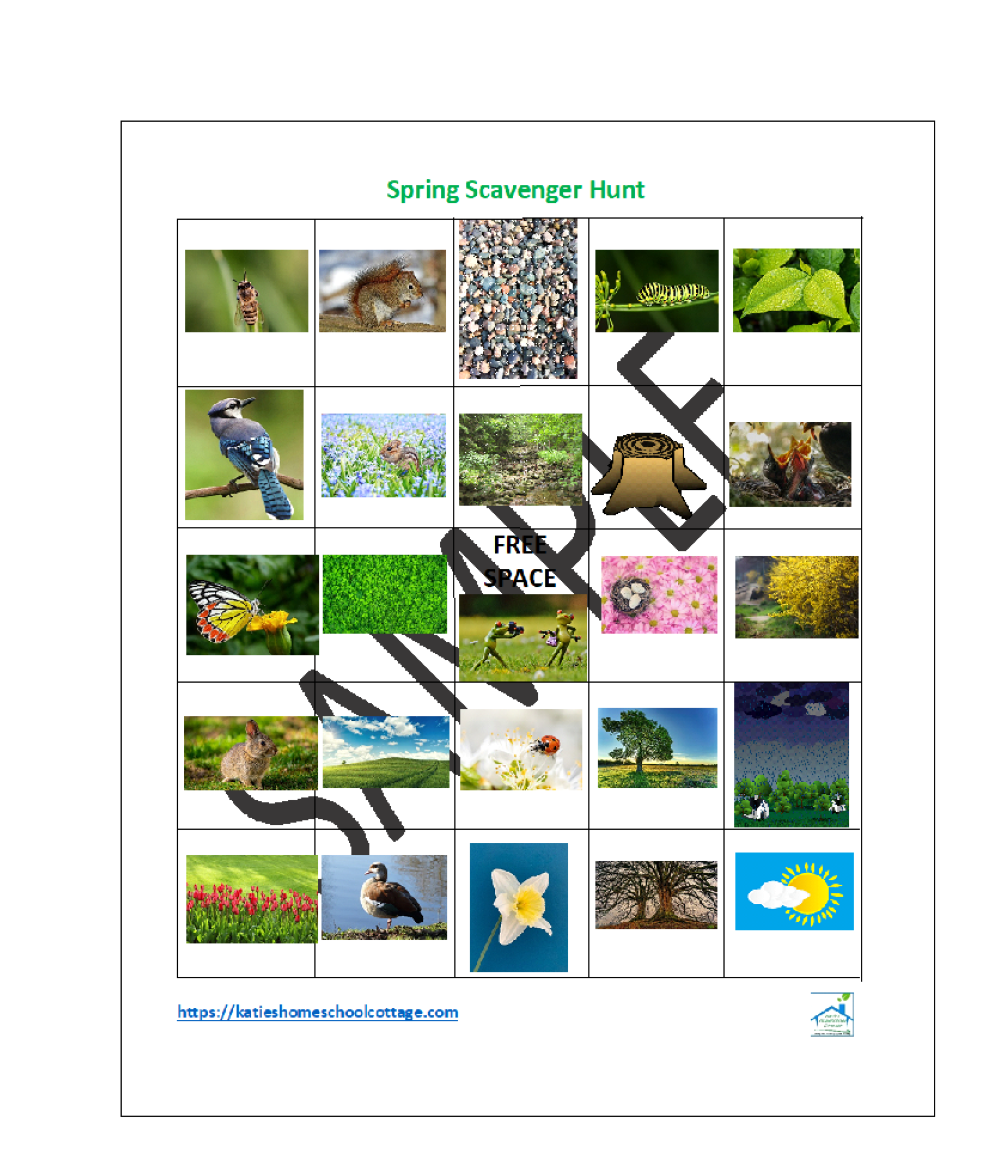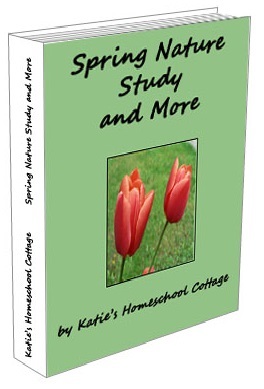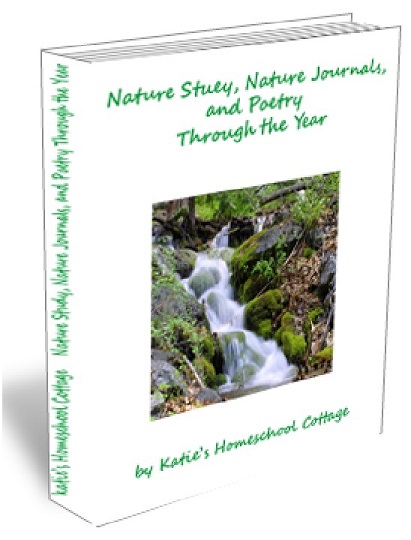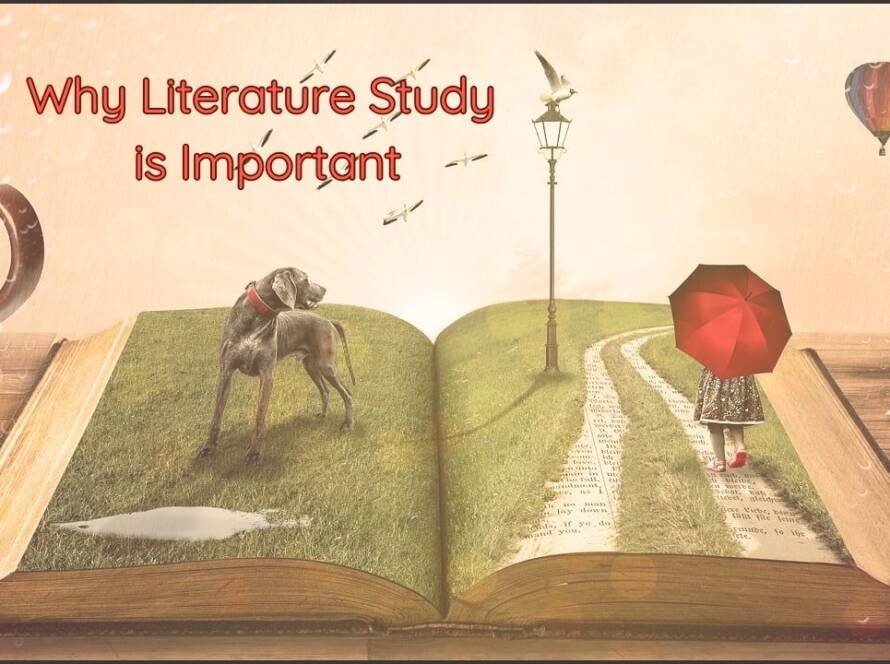I love the idea of a spring nature study and bringing my kids outdoors and exploring science in a natural way.
But how do you turn it into something where you know your kids have learned some of those scientific concepts you want to teach?
To prepare properly for an adventurous study of our natural world, we must arm ourselves with the necessary equipment.
For our family, that was a small backpack per child filled with the following nature study items (some in my own pack):
- Nature journal/notebooking pages
- Colored pencils (erasable)
- Assorted grade pencils
- Erasers
- Mini binoculars
- Assorted small field guides or pocket cards (topics included trees, wildflowers, birds, rocks, insects, animal tracks, clouds, plants, fish)
- Trail snack
- Small bottle of water
- Sunscreen
- Bug spray
- Handiwipes
- Clipboards
- Plaster paris
- Baggies (if leaf, rock, seed pod collection was permitted)
Fully equipped during our walks, we focus on a variety of things depending on what we are studying or what we are interested in that day.
If it is a walk we frequently take during different seasons, we discuss changes we observe since our last walk.
One way to do this is by keeping a nature journal of what we are observing in nature.
Through the use of observation and reading field guides, children can narrate onto journal notebook pages what they have observed in nature, what they read in the field guides, any other information about their nature walk, and maybe a drawing.
If you want to put this narration and drawing in a bound book, you can find these in book stores or school supply catalogs with lined or blank pieces of paper.
Some may have fancy fabric covers; some may be plain white or with a simple outline sketch on the outside.
We have used all of these variations and have enjoyed them all.
Now that is an effective way of teaching about what you see directly in nature.
But, how do you teach areas within biology, physics, and chemistry from there?
Well that’s where you build a bridge or connection between what the child experiences first hand in nature and has a personal connection with a concept of science that can be extended from the child’s first hand knowledge.
Let’s say you are studying weather where it is common to experience thunderstorms and lightning during that month.
After you observe this weather, maybe making charts of what the weather has been or making predictions, and researching what causes thunderstorms and lightning, you want to extend your study into other areas of science.
From thunderstorms, you begin to read and do science experiments with sound waves and vibrations or examine the water cycle.
Or, you look at acid rain and focus on some chemistry experiments looking at the effects of acid rain, which can extend into a study of acids and bases and ph.
Maybe you want to move from there and look at lightning and what causes that and do experiments with static electricity and electrical circuits and conductors and insulators.
Or, after rain, sometimes you can see a rainbow.
After looking at the causes of a rainbow, you look at the color spectrum and perform experiments with white light and prisms and color absorption.
As you can see one study in weather, can lead you into more detailed studies encompassing areas of physical sciences and chemistry.
Any studies with different classes of animals and plants can build into anatomy and physiology, and botany studies.
Spring is the time to study life cycles of animals, insects, amphibians, and plants! So many areas of biology!
So, don’t be afraid to let go of that textbook, at least for a little while.
To help keep your littles involved in this nature study, give them a Spring Scavenger Hunt to work on while the olders work on the other observations we have mentioned above.
After exploring where your nature studies lead you, you may find you are enjoying and learning so much more science than you imagined that you will forget to return to your textbook.
If you are interested in more ways to teach science this way like integrating geology and crystals, buoyancy, density, volume, magnetism, and gravity and so go check out our Spring Nature Study and More ebook where we offer suggested book titles, nature walk discussions and activities, online activities and experiments and notebooking pages to keep a journal!
Oh, yah, and lots of poetry to appreciate the world around you as you learn!
We also have a year long nature study with all four seasons and more than a year’s worth of science topics for an economical price – Nature Studies, Nature Journal and Poetry Through the Year.



